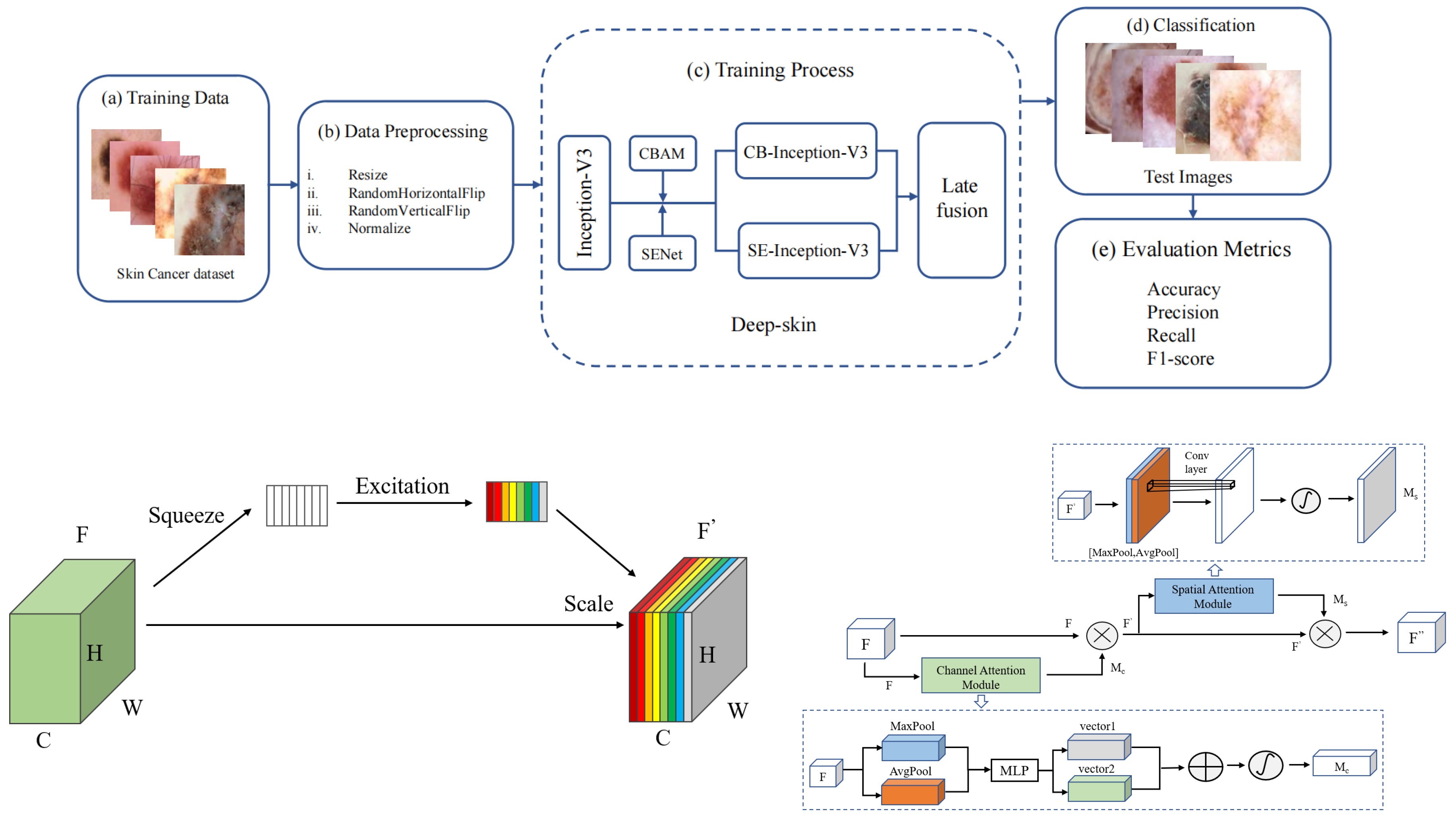
Skin tumors have become one of the most common diseases worldwide. Usually, benign skin tumors are not harmful to human health, but malignant skin tumors are highly likely to develop into skin cancer, which is life-threatening. Dermoscopy is currently the most effective method of diagnosing skin tumors. However, the complexity of skin tumor cells makes doctors’ diagnoses subject to error. Therefore, it is essential to use computers for assisted diagnosis, thereby improving the diagnostic accuracy of skin tumors. In this paper, we propose Deep-skin, a model for dermoscopic image classification, which is based on both attention mechanism and ensemble learning. Considering the characteristics of dermoscopic images, we suggest embedding different attention mechanisms on top of Inception-V3 to obtain more potential features. We then improve the classification performance by late fusion of the different models. To demonstrate the effectiveness of Deep-skin, we conduct experiments and evaluations on the publicly available dataset Skin Cancer: Malignant vs. Benign and compare the performance of Deep-skin with other classification models. The experimental results indicate that Deep-skin performs well on the dataset in comparison to other models, achieving a maximum accuracy of 87.8%. In the future, we intend to investigate better classification models for automatic diagnosis of skin tumors. Such models can potentially assist physicians and patients in clinical settings.
Link to dataset: Skin Cancer: Malignant vs. Benign (kaggle.com)